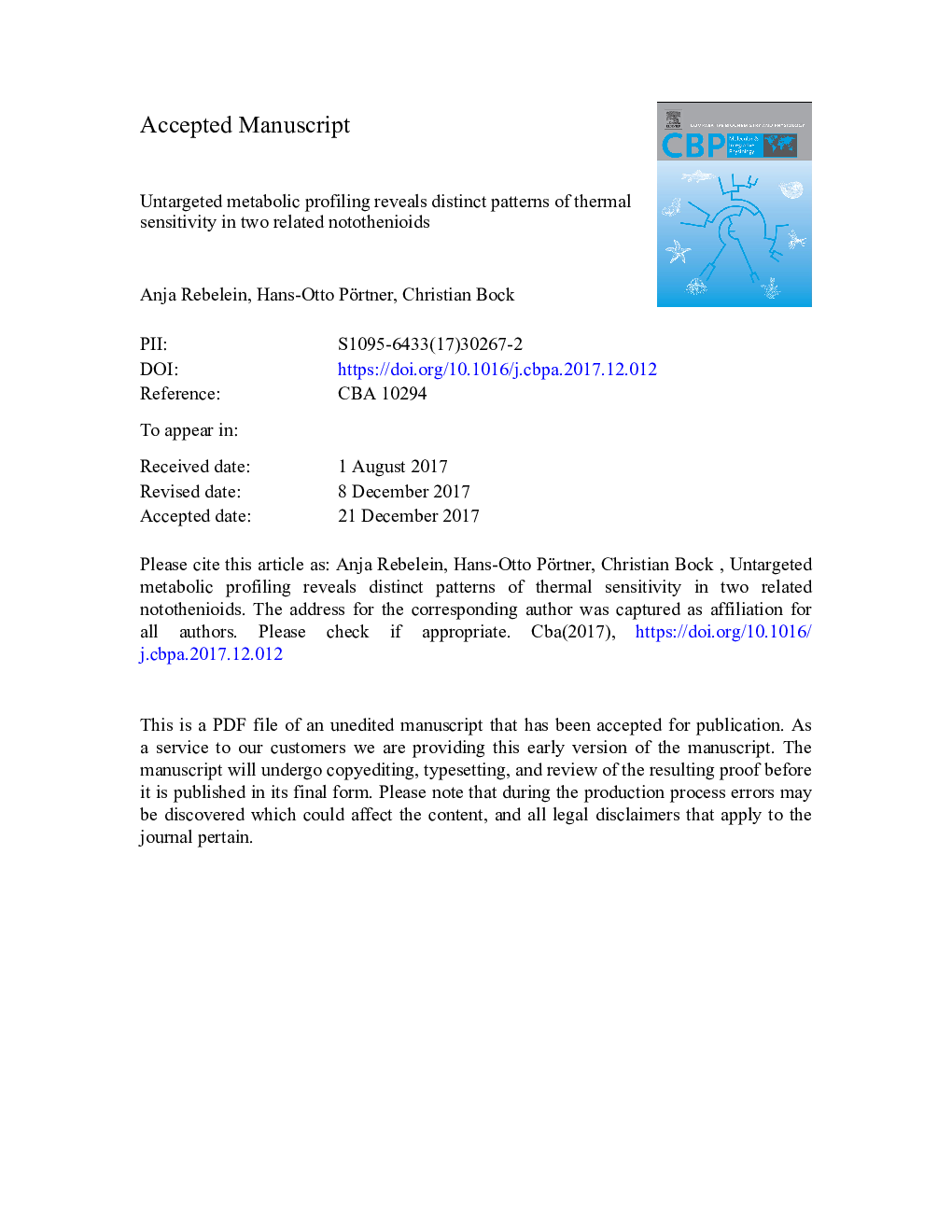| Article ID | Journal | Published Year | Pages | File Type |
|---|---|---|---|---|
| 8318292 | Comparative Biochemistry and Physiology Part A: Molecular & Integrative Physiology | 2018 | 40 Pages |
Abstract
NMR spectroscopy identified 37 metabolites that were present in each sample, but varied in their absolute concentration between species and between treatments. A decrease in amino acid levels indicated an increased amino acid catabolism after incubation to 5 °C. In addition, long term warming initiated shifts in organic osmolyte concentrations and modified membrane structure observed by altered levels of phospholipid compounds. Differences in the metabolite profile between the two notothenioid species can be related to their divergent lifestyles, especially their different rates of motor activity. Increased levels of the Krebs cycle intermediate succinate and a higher reduction of amino acid concentrations in warm-acclimated N. rossii showed that N. rossii is more affected by warming than N. coriiceps.
Related Topics
Life Sciences
Biochemistry, Genetics and Molecular Biology
Biochemistry
Authors
Anja Rebelein, Hans-Otto Pörtner, Christian Bock,
